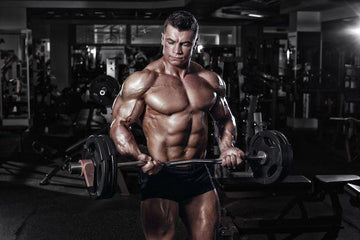

Squat-Tastic Glutes: The Case for Deep Squatting
Table of Contents
Squat-Tastic Glutes: The Case for Deep Squatting
Squatting can be especially nerve racking for some women because for years, people have been told no to squat deep in because deep squats cause injury. No!
If you have a chance to look at any baby, when he squats down, his ass is to the floor. No one would ever run over and tell a baby squatting down that you are going to hurt yourself and neither should you thinking squatting deep is going to hurt you as well. The squat is one of the most metabolically demanding exercises a woman can do. The squat works the entire lower half of the body, including the hips, glutes, quads, hamstrings, and calves, while also hitting the core, shoulders, and back. Don’t be one of those ladies that goes to the gym and think that leg extensions are going to get you a bad ass body. Squatting can be especially nerve racking for some women because for years, people have been told no to squat deep in because deep squats cause injury. No! Contrary to popular belief, squatting deep is not bad for the knees—studies have found there is no difference between partial, parallel, and deep squats in terms of the impact on the front knee joint. One flawed research study in 1961 came out with findings that squats were bad for a person’s knees. Research since 1961, however, has refuted these findings, showing no correlation between deep squatting and injury risk. In fact, there is some evidence that those who perform deep squats have increased stability of the knee joint. Previous studies have shown that the knee extension places more stress on the knees that the squat. So long as there’s no history of injuries, “ass to grass” is the way to go. However, if you do have knee issues (and sitting at a desk all day is no good for the knees), there’s nothing inherently wrong with sticking to parallel squats.

Researchers compared the effects of squat training with a short vs. a long range of motion. Subjects were randomly assigned to 12 weeks of progressive squat training (repetition matched, repetition maximum sets) performed as either a) deep squat or shallow squat. Strength, jump performance, muscle size of the thigh muscles, as well as collagen synthesis in the patellar tendon, were assessed before and after the intervention. Both groups had improvements in strength after both protocols. However, the main finding was that deep squat training resulted in superior increases in front thigh muscle (4–7 %) compared to shallow squat training, whereas no differences were observed in patellar tendon CSA. In parallel with the larger increase in front thigh muscle, a superior increase in isometric knee extension strength, and squat-jump performance were observed in the deep squat group compared to the shallow squat group. Training deep squats elicited favorable adaptations on knee extensor muscle size and function compared to training shallow squats. Another recent study in the Journal of Strength and Conditioning Research provides further insight into the effect of range of motion (ROM) on performance in the squat. The study compared power, force, velocity, and work output during full- and partial-range of motion squats with either 5 or 10 reps per set. Results showed that work output was greatest in the full-ROM conditions and the full-ROM heavy load (5 reps) trial resulted in 17 percent more work than the full-ROM light load (10 reps) trial. Researchers suggest using full-ROM heavy squats with fewer reps for more sets if the goal is fat loss or hypertrophy. Peak velocity during the squat was highest in the full-ROM squats with the 67 percent load (10 reps). Researchers suggest athletes in high-speed sports that require running and jumping should use full-ROM squats.
So to sum up the research, there is no studies to validate that squatting deep is bad for your knees, squatting deep activates the glutes better than a shallow squat, and deep squats can result in higher peak velocity of the legs for sprinting or any other explosive type of sport.
Chandler, T., Wilson, G., Stone, M. (1989). The effect of the squat exercise on knee stability. Medicine and Science in Sports and Exercise, 21(3). 299-303. Escamilla RF, Fleisig GS, Zheng N, Barrentine SW, Wilk KE, Andrews JR. (1998).
Biomechanics of the knee during closed kinetic chain and open kinetic chain exercises, Medicine & Science in Sports & Exercise, 30, 556-569. Escamilla R.F. (2001).
Knee biomechanics of the dynamic squat exercise. Medicine and Science in Sports and Exercise, 33, 127-141.
Signorile JF, Weber B, Roll B, Caruso John, Lowensteyn I, Perry AC. (1994) An electromyographical comparison of the squat and knee extension exercises. Journal of Strength and Conditioning Research, 8, 178-183.
Wilk KE, Escamilla RF, Fleisig GS, Barrentine SW, Andrews JR, Boyd ML. (1996). A comparison of tibiofemoral joint forces and electromyographic activity during open and closed kinetic chain exercises. American Journal of Sports Medicine, 24 (4), 518-27.
Drinkwater, E., Moore, N., et al. Effects of Changing from Full Range of Motion to Partial Range of Motion on Squat Kinetics. Journal of Strength and Conditioning Research. 2012. 26(4), 890-896.
MUSCLE MEDIA MAGAZINE FOR WOMEN
The premier source of training, nutrition, supplements, fat loss and health for women.

















